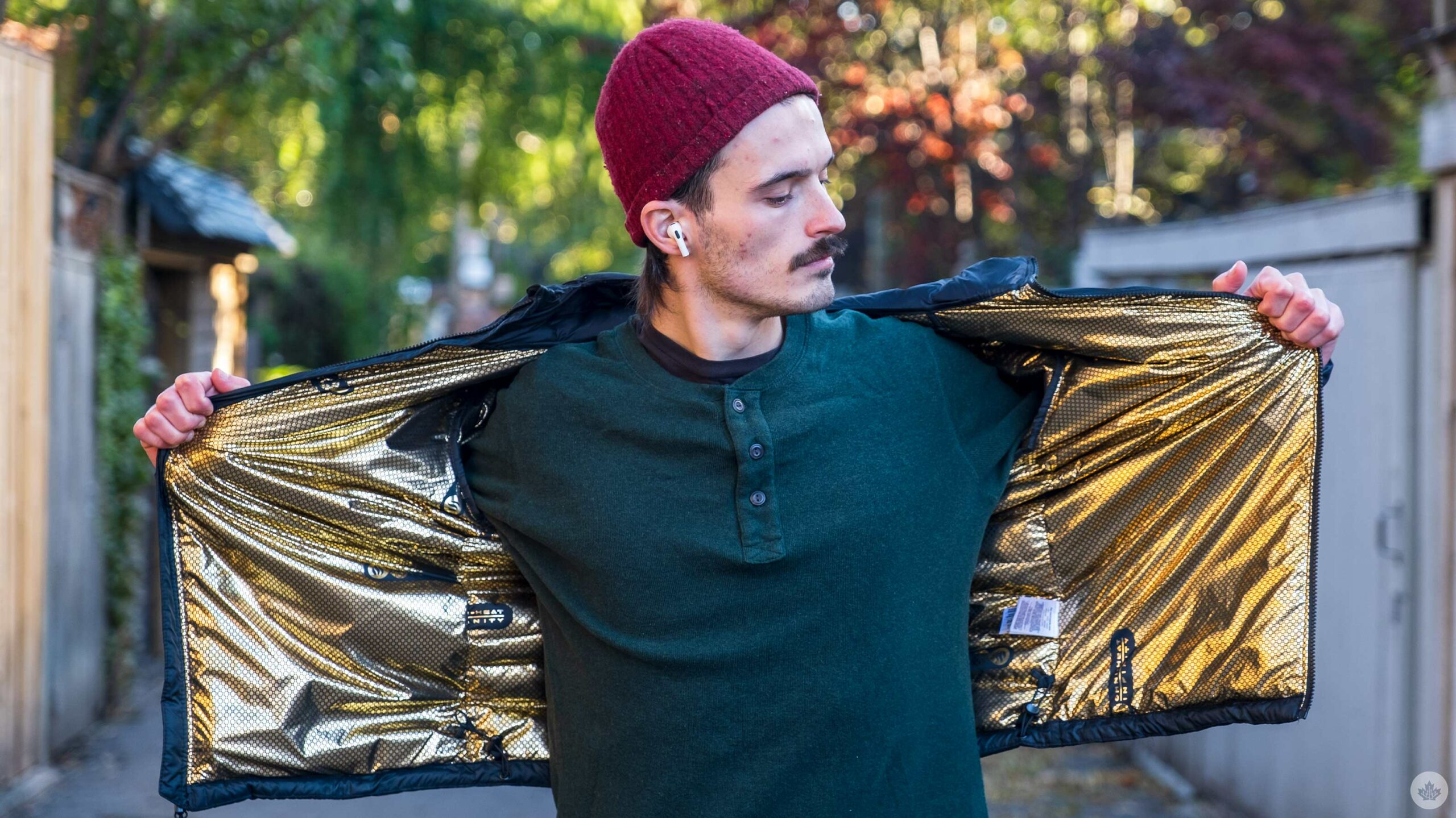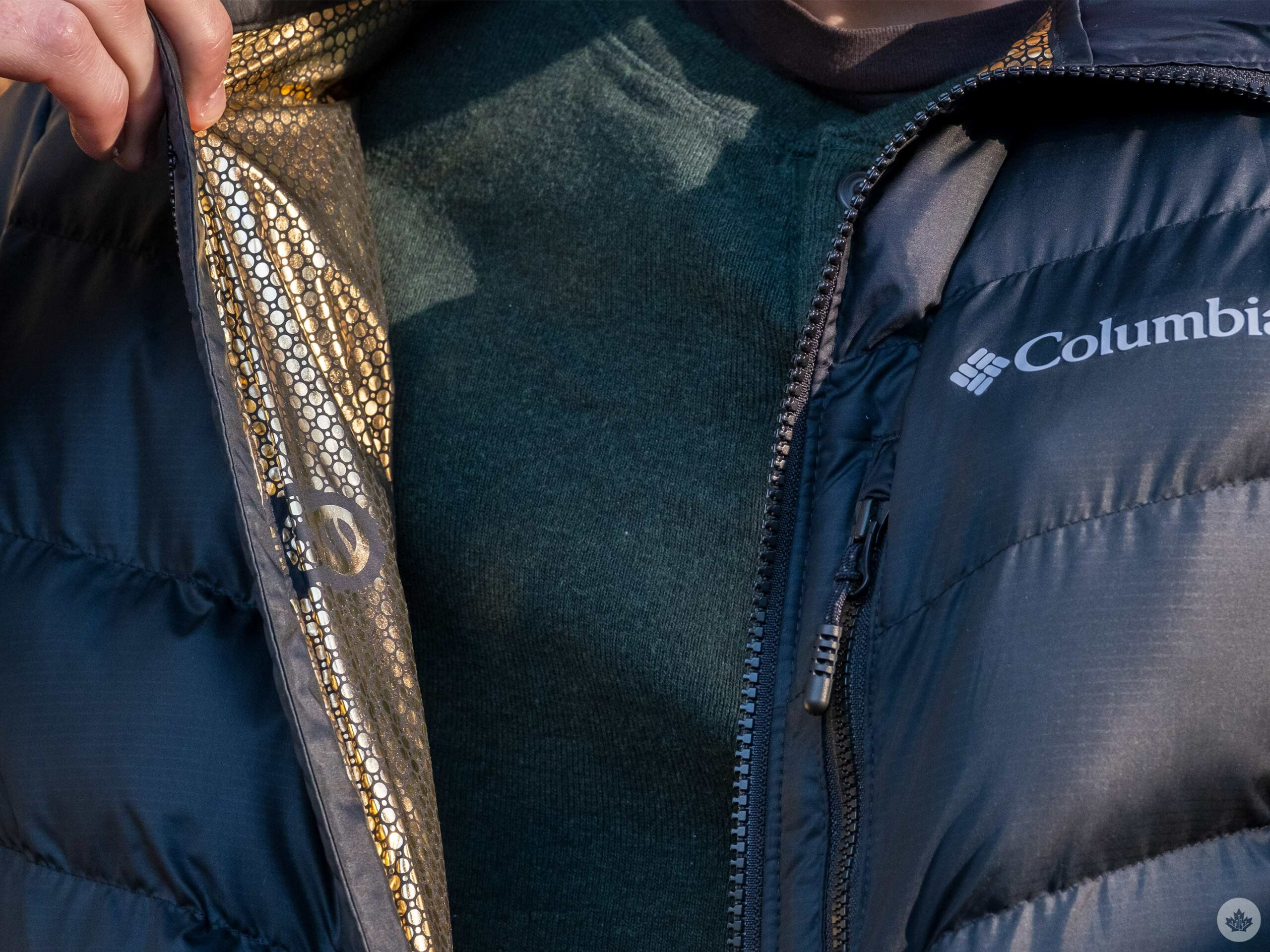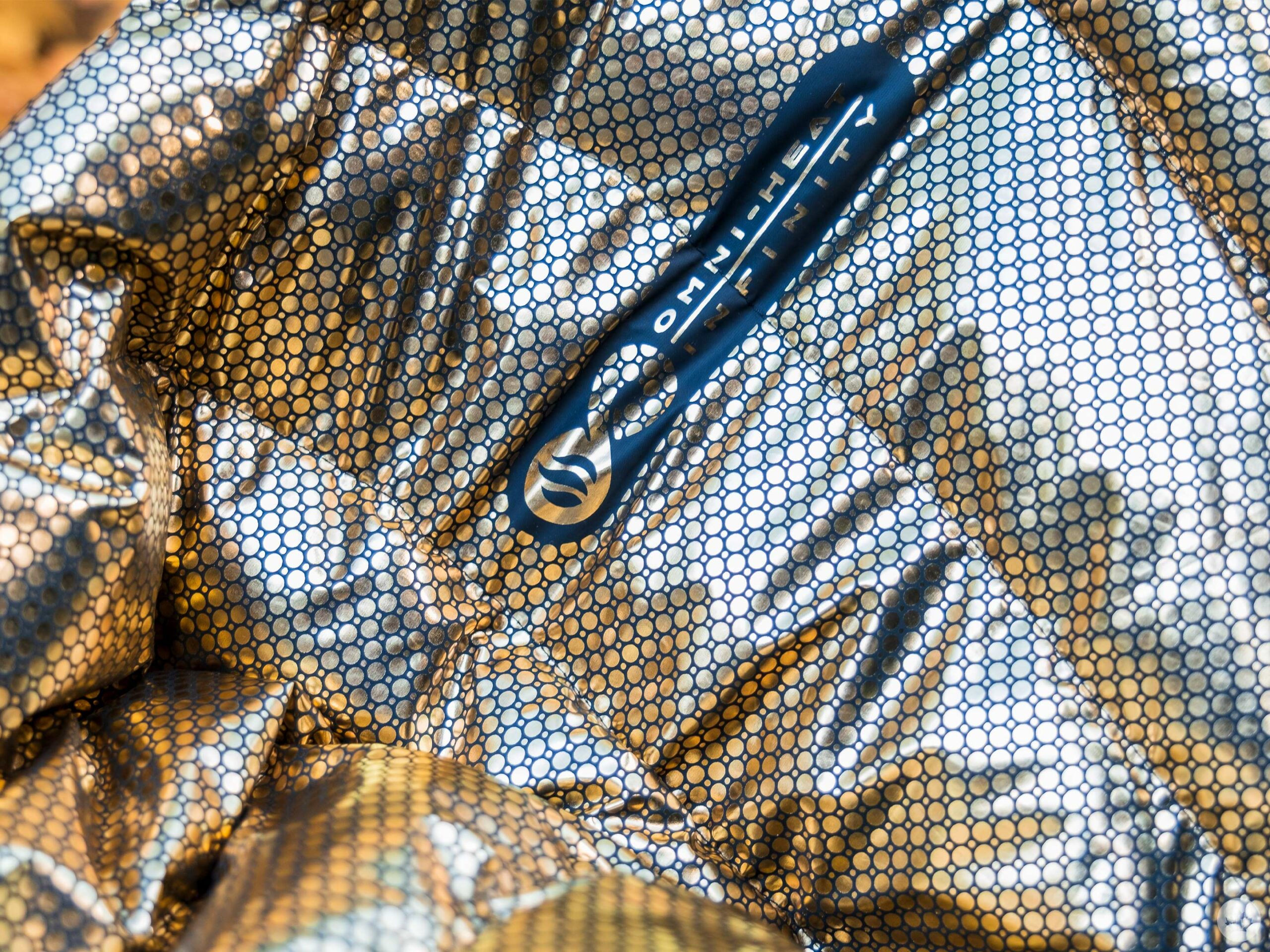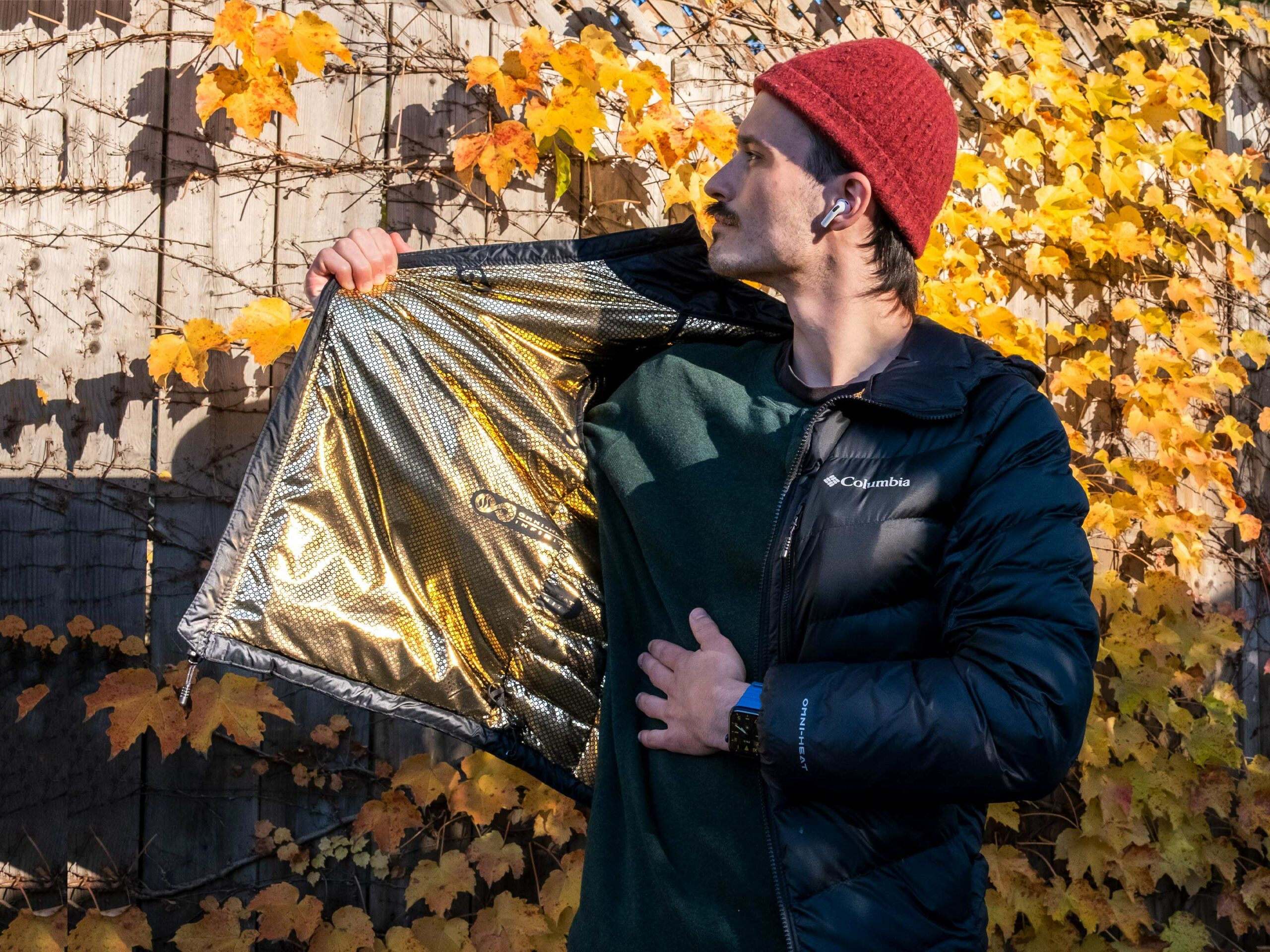
Columbia is revamping its Omni-Heat fabric with a new design that traps more warmth to help make lighter jackets and coats perform better.
Over the past month, I’ve been daily driving the Columbia Men’s Labyrinth Omni-Heat Infinity Insulated Hooded Jacket to test out the new tech, and for the most part, I’ve enjoyed it. Part of the reason I agreed to do this review was that up until the winter of 2019, my main cold-weather jacket was an older Columbia Omni-Heat coat from 2014-2015. I loved that coat for its lightweight and impressive warmth. It was a bit heavier than the puffer I got to review, but it was still lighter than most winter jackets.
“While I wish I could expend the budget and the time to test out every single black puffer jacket from the $100 to $300 range to compare like some sort of Wirecutter employee’s fever dream, I can’t.”
If you’re unfamiliar with Omni-Heat, it’s a form of reflective dots that Columbia attaches to a fabric that can reflect heat towards the body. This year’s innovation is a tighter weave of these dots that can reflect even more heat back onto the wearer. Specifically, this new model can reflect up to 40 percent of heat while the original Omni-Heat only pushes back around 30 percent.

When talking to Haskell Beckham, the company’s director of innovation, he shared that this tech can be applied in many different ways. For instance, Columbia’s Omni-Heat Black Dot uses dots on the outside of the coat to absorb heat from the sun. When developing last year’s tech, Columbia also learned how to colour the Omni-Heat foil, leading us to the new tech’s fun space-inspired gold colour.
Yes, sadly, this means there’s no magic in the new colour, other than the fact that it looks fantastic and has a little more flash compared to the older style of Omni-Heat. While I wish the gold meant something more, I love the space vibes that it puts out.

Beckham also shared that the tech works optimally with more layers underneath the jacket to help trap the reflected heat. This means that the coat would technically be more functional if the Omni-Heat fabric were under the down lining inside the jacket’s outer shell, but then consumers wouldn’t be able to see it.
These kinds of caveats surround the tech once you dive a little deeper as well. Columbia talks a lot about the innovation of Omni-Heat being both reflective and breathable. Still, it appears that the company knows that it could be pushing this tech even further to maximize heat retention, but it isn’t. Some of the graphs even showed that the fabric becomes slightly less breathable past a certain point. I assume this is because the open top and bottom of the jacket still provide enough airflow for most circumstances.
Combining this with the fact that the tech would work better inside the jacket’s lining doesn’t give me the most confidence in Columbia as a consumer. In my time with the coat, it’s been excellent, and I’ve enjoyed the fit, look and warmth of it, but I’m not sure if it actually presents enough upgrades over a traditional jacket to be worth its expensive $209 price tag. Especially something as light as this puffer. At least if you’re wearing it on its own. As a base layer under a larger jacket with much more insulation, I could see the tech working more effectively in cold temperatures.
While I wish I could expend the budget and the time to test out every single black puffer jacket from the $100 to $300 range to compare like some sort of Wirecutter employee’s fever dream, I can’t. So all I can leave you with is what I’ve learned and the simple fact that I still like this jacket regardless of its issues. It’s warm enough to be a good fall coat and light and thin enough to be a base layer on freezing days too. And as meaningless as the golden colour is, I love it (it can even double as a quick space costume).

Over the past month, there haven’t been too many cold days in Toronto to test out the jacket with, but it has gotten down to around 5 degrees some nights, and if you’re not layered up enough or doing something active, you will still get pretty cold in this coat. The other day it was around six degrees, and I was sitting in a park for about 30-minutes testing out the new Mavic 3. By the end of this outing, I was getting pretty chilly. Other days, when biking around with this jacket on I found it was a great windbreaker and had no problem keeping me warm when I was being more active.
Overall, I’d be less critical of the tech if Columbia wasn’t pricing its Omni-Heat jacket at a premium in Canada for such meagre benefits over a traditional insulated puffer jacket, but that said, the fit and finish of the coat lives up to the quality you’d expect from the brand. With this in mind, if you like it or any other models in the Omni-Heat Infinity lineup, you can’t go wrong with buying one. I’ll likely be keeping my eye out for some sales on a heavier, more winterized version in Jan-Feb when the winter clothing sales start.
You can buy the Labyrinth Omni-Heat Infinity Insulated Hooded Jacket for $209.99 here.
UPDATE 03/12/2021: Since I reviewed this jacket I’ve also spent time testing out the Uniqlo Ultra Light Down Parka to build a better basis of what makes a top-notch puffer jacket. When it came down to the comparison of the Columbia jacket you just read about, and the Uniqlo alternative, Columbia won squarely on its heavier weight, softer materials and attention to detail. That being said, the Uniqlo option is $100 CAD (half the price) and packs up really small making it ideal for mildly cold weather travel.
MobileSyrup utilizes affiliate partnerships. These partnerships do not influence our editorial content, though MobileSyrup may earn a commission on purchases made via these links.
MobileSyrup may earn a commission from purchases made via our links, which helps fund the journalism we provide free on our website. These links do not influence our editorial content. Support us here.



